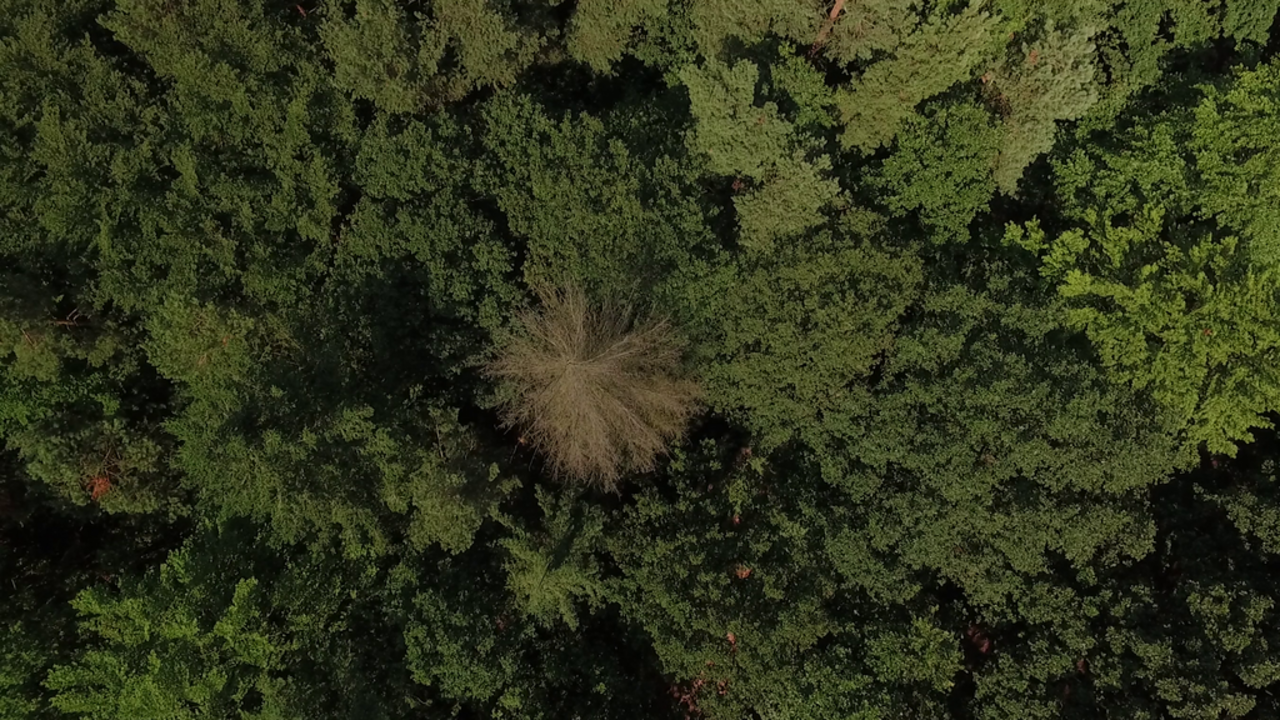Project
Crossing scales and disciplines to identify global trends in tree mortality

Crossing scales and disciplines to identify global trends in tree mortality as indicator of forest health
Globally, forests provide life-sustaining services such as storing carbon, hosting biodiversity, and regulating climate. Locally, human welfare relies on a stable provision of forest resources for energy, building materials, and food. Yet, this service and resource provision may be compromised as recent observations document instances of widespread tree mortality in all forested biomes. However, the lack of reliable global forest assessments precludes conclusions on a current threat of the world’s forests and on their fate under rapidly changing environmental conditions.
Existing monitoring approaches are either incomplete or use data with inadequate resolution for detecting individual tree mortality. Such data exist but are spread across many different depositories and disciplines (field monitoring networks, forest inventories, remote sensing). A common and openly accessible depository would facilitate a horizontal (intradisciplinary) and vertical (interdisciplinary, across spatial scales) information transfer and the rapid detection and interpretation of changes in forest condition and future development of global forest ecosystems.
Background and Objective
Workshop report:
This workshop aims to bring together different disciplines and data depositories. Attendees will meet in plenary sessions to discuss best approaches for data integration and interpretation to develop a global monitoring network. Smaller break-out group meetings, both intra- and interdisciplinary, will provide platforms for developing action plans on how to combine, manage, and redistribute data. Further data requirements will be discussed and new tools (a mortality app) will improve data acquisition and foster public awareness. Working groups will be responsible for (1) the publication of workshop results, (2) the coordination of funding proposals for initializing and maintaining the data depository and (3) the planning of future activities, including follow-up meetings. Both meetings and working groups will be led by young scientists allowing them to increase their visibility in the scientific community. Mentoring by established researchers will reinforce integration of young scientists and promote their future careers.
Links and Downloads
Thünen-Contact

Involved external Thünen-Partners
- Max - Planck - Institut für Biogeochemie
(Jena, Deutschland) - Georg-August-Universität Göttingen
(Göttingen, Deutschland)
Funding Body
-
Volkswagenstiftung
(national, privat)
Duration
1.2017 - 7.2017
More Information
Project status:
finished
Publications
- 0
Ferretti M, Gessler A, Cools N, Fleck S, Guerrieri R, Jakovljevic T, Nicolas M, Nieminen TM, Pitar D, Potocic N, Raspe S, Schaub M, Schwärzel K, Timmermann V, Vejpustková M, Vesterdal L, Vanninen P, Waldner P, Zimmermann L, Sanders TGM (2024) Resilient forests need joint forces for better inventorying and monitoring. Forest Ecol Manag 561:121875, DOI:10.1016/j.foreco.2024.121875
- 1
Rukh S, Sanders TGM, Krüger I, Schad T, Bolte A (2023) Distinct responses of European beech (Fagus sylvatica L.) to drought intensity and length - A review of the impacts of the 2003 and 2018-2019 drought events in Central Europe. Forests 14(2):248, DOI:10.3390/f14020248
- 2
Schmitz A, Sanders TGM, Bolte A, Bussotti F, Dirnböck T, Penuelas J, Pollastrini M, Prescher A-K, Sardans J, Verstraeten A, de Vries W (2023) Responses of forest ecosystems in Europe to decreasing nitrogen deposition. In: Du E, de Vries W (eds) Atmospheric nitrogen deposition to global forests : Spatial variation, impacts, and management implications. London: Academic Press, pp 227-245
- 3
Rukh S, Schad T, Strer M, Natkhin M, Krüger I, Raspe S, Eickenscheidt N, Hentschel R, Hölscher A, Reiter P, Sanders TGM (2022) Interpolated daily temperature and precipitation data for Level II ICP Forests plots in Germany. Ann Forest Sci 79:47, DOI:10.1186/s13595-022-01167-3
- 4
George J-P, Bürkner P-C, Sanders TGM, Neumann M, Cammalleri C, Voigt JV, Lang M (2022) Long-term forest monitoring reveals constant mortality rise in European forests. Plant Biol 24(7):1108-1119, DOI:10.1111/plb.13469
- 5
Krüger I, Schmitz A, Sanders TGM (2021) Climate condition affects foliar nutrition in main European tree species. Ecol Indic 130:108052, DOI:10.1016/j.ecolind.2021.108052
- 6
Wang S, Zhang Y, Ju W, Chen JM, Cescatti A, Sardans J, Janssens IA, Wu M, Berry JA, Campbell E, Fernandez-Martinez M, Alkama R, Sitch S, Smith WK, Yuan W, He W, Lombardozzi D, Kautz M, Sanders TGM, Krüger I, et al (2021) Response to Comments on "Recent global decline of CO2 fertilization effects on vegetation photosynthesis". Science 373(6562):1-8, DOI:10.1126/science.abg7484
- 7
Krüger I, Sanders TGM, Holzhausen M, Schad T, Schmitz A, Strich S (2020) Am Puls des Waldes : Umweltwandel und seine Folgen - ausgewählte Ergebnisse des intensiven forstlichen Umweltmonitorings. Berlin: BMEL, 51 p
- 8
Sanders TGM, Krüger I, Holzhausen M (2020) Das intensive forstliche Monitoring - Level II. Eberswalde: Thünen-Institut für Waldökosysteme, 2 p, Project Brief Thünen Inst 2020/25, DOI:10.3220/PB1608106763000
- 9
Sanders TGM, Spathelf P, Bolte A (2019) The response of forest trees to abiotic stress. Burleigh Dodds Ser Agric Sci 71:99-116, DOI:10.19103/AS.2019.0057.05
- 10
Krause S, Strer M, Mund J-P, Sanders TGM (2019) UAV remote sensing data handling: A transition from testing to long-term data acquisition for intensive forest monitoring. J Photogramm Remote Sensing Geoinf Sci 28(39):167-174
- 11
Prescher A-K, Schmitz A, Sanders TGM, Nussbaumer A, Karlsson GP, Neirynck J, Gottardini E, Hansen K, Johnson J, Nieminen TM, Schaub M, Ukonmaanaho L, Vanguelova EI, Verstraeten A, Waldner P (2018) Change in sulphur pools in forest ecosystems following the reduction of atmospheric sulphur dioxide. Geophys Res Abstr 20:9027
- 12
Seidling W, Travaglini D, Meyer P, Waldner P, Fischer R, Granke O, Chirici G, Corona P (2014) Dead wood and stand structure - relationships for forest plots across Europe. iForest 7: 269-281, DOI:10.3832/ifor1057-007
- 13
Giordani P, Calatayud V, Stofer S, Seidling W, Granke O, Fischer R (2014) Detecting the nitrogen critical loads on European forests by means of epiphytic lichens : a signal-to-noise evaluation. Forest Ecol Manag 311(1):29-40, DOI:10.1016/j.foreco.2013.05.048
- 14
Seidling W, Kanold A, Kompa T, Lambertz B, Scheibe O, Schiller M, Schmiedinger A, Wenzel A, Werner W, Zoldan JW (2014) Vegetationserhebungen: Bearbeiterunterschiede bei Artenzahlen von Gefäßpflanzen. Tuexenia 34:329-346
- 15
Sanders TGM, Seidling W (2013) Damaging agents in different forest types for adapted risk management. In: Building bridges in ecology : linking systems, scales and disciplines ; GfÖ 43rd Annual Meeting of the Ecological Society of Germany, Austria and Switzerland ; September 9 to 13, 2013, Potsdam, Germany ; book of abstracts. Göttingen: Gesellschaft für Ökologie, pp 128-129
- 16
Seidling W, Ziche D, Beck W (2012) Climate responses and interrelations of stem increment and crown transparency in Norway spruce, Scots pine, and common beech. Forest Ecol Manag 284:196-204, DOI:10.1016/j.foreco.2012.07.015
- 17
Ziche D, Seidling W (2010) Homogenisation of climate time series from ICP forests level II monitoring sites in Germany based on interpolated climate data. Ann Forest Sci 67(8):804/1-804/6, DOI:10.1051/forest/2010051
- 18
Ziche D, Seidling W (2010) Homogenisierte Klimadaten aus dem Waldmonitoring . AFZ Der Wald 65(24):11-13
- 19
Cox F, Barsoum N, Lilleskov EA, Bidartondo MI, Seidling W (2010) Mykorrhizierung von Kiefernwurzeln : Stickstoffverfügbarkeit als Einflussfaktor. AFZ Der Wald 65(24):8-10
- 20
Ziche D, Seidling W (2009) Benefits of meteorological measurements at forest monitoring sites compared with interpolated climatic data. In: Kaennel Dobbertin M (ed) Long-term ecosystem research: Understanding the present to shape the future : International Conference, Zurich, Switzerland, September 7-10, 2009 ; Abstracts. p 28
- 21
Seidling W, Beck W, Ziche D (2009) Crown condition and radial stem wood increment: documentation of complex relationships. In: Kaennel Dobbertin M (ed) Long-term ecosystem research: Understanding the present to shape the future : International Conference, Zurich, Switzerland, September 7-10, 2009 ; Abstracts. p 95
- 22
Seidling W, Lux W, Strich S, Bolte A (2007) Forstliches Umweltmonitoring in Deutschland unter Forest-Focus. AFZ Der Wald 62(11):577-579
